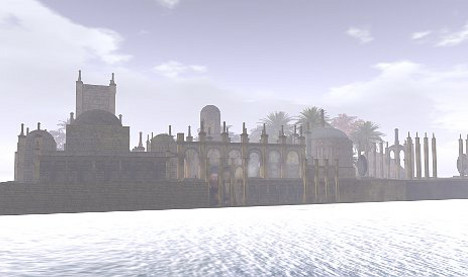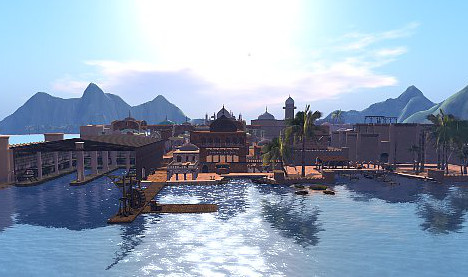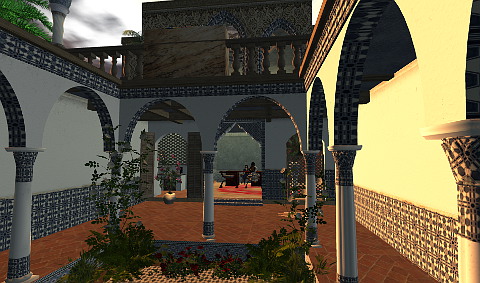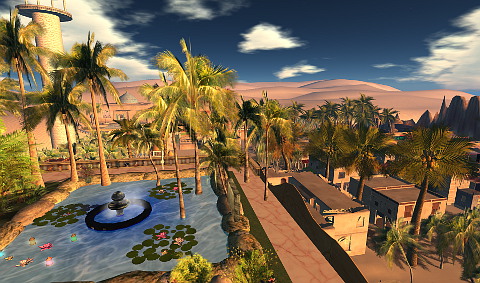City of Tor and its outskirts
Negotiating with Doc Grun, Vizier, former High Pasha of the Oasis of Nine Wells, in the City of Tor.
Much of the city, of course, was organized to support the caravan trade. There were many walled, guarded warehouses, requiring their staffs of scribes and guards, and, in hundreds of hovels, lived kaiila tenders, drovers, and such, who would, at the caravan tables, when their moneys had been exhausted, apply, if accepted, making their mark on the roster, once more for a post with some new caravan. Guards for these caravans, incidentally, were usually known by, and retained by, caravan merchants between caravans. They were known men. Tenders and drovers, on the whole, came and went. Elaborate random selection devices, utilizing coins and sticks, and formulas, were sometimes used by merchants to assure that applying tenders and drovers were selected, if they were not known, by chance. Tenders and drovers were assured that this was to insure fairness. Actually, of course, as was well known, this was a precaution against the danger of hiring, en bloc, unwittingly, an organized group of men, who might, prior to their hiring, have formed a plan to slay the guards and merchants and make off with the caravan. Tenders and drovers, however, like men generally, were an honest sort.
Tor, rather similarly, (to the oasis) though few crops were grown within its walls, was built high, about its water, several wells in the deepest area in the city. The architecture of Tor, in concentric circles, broken by numerous, narrow, crooked streets, was a function of the radius from its wells. An advantage of this municipal organization, of course, though it is scarcely a matter of intentional design, is that the water is in the most protected portion of the city, its center.
These buildings, on the outside smooth and bleak, save for occasional narrow windows, high, not wide enough to admit a body, abut directly on the streets, making the streets like deep, walled alleys. In the center of the street is a gutter. It seldom rains in Tor, but the gutter serves to collect waste, which is often thrown into it, through open doors, by slaves. Within these walls, however, so pressing upon the street, I knew there were often gardens, walled, well-watered, beautiful, and cool, dark rooms, shielded from the heat and sun, many with superb appointments.
The buildings of Tor are of mud brick, covered with colored, often flaking, plasters. But now, in the sun, and the dust, raised by the people in the streets, everything seemed drained of color.
Tor was, as Gorean cities went, rich, trading city. It was headquarters for thousands of caravan merchants. In it, too, were housed many craftsmen, practicing their industries, carvers, varnishers, table makers, gem cutters, jewelers, carders, dyers of cloth, weavers of rugs, tanners, makers of slippers, toolers of leather, potters, glaziers, makers of cups and kettles, weapon smiths, and many others. Much of the city, of course, was organized to support the caravan trade.
Tor, lying at the northwest corner of the Tahari, is the principal supplying point for the scattered oasis communities of that dry vastness, almost a continent of rock, and heat, and wind and sand.
(from “Tribesmen of Gor”)
Leave a Reply
You must be logged in to post a comment.




